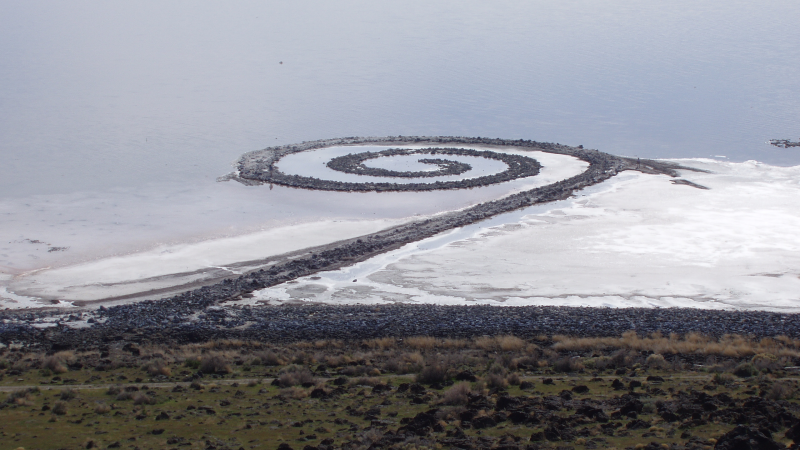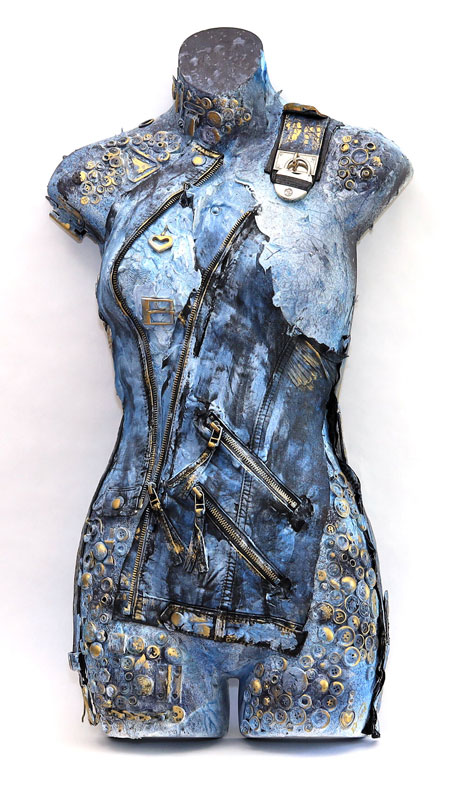I’m often asked the question, what is Environmental Art? This article provides a basis of understanding of the topic and explains its roots, the artists who identify with this movement, and its importance today.

To begin, Environmental Art is a very broad term. It embraces a variety of practices and movements such as, and not limited to, Land art, Earth art, Sustainable art, and Conceptual Art. As a movement, environmental art emerged in the 1960s. The leading artists associated with this type of art included Jean-Max Albert, Piotr Kowalski, Nils Udo and Robert Smithson.
Although we associate Environmentalism as a recent phenomenon, it is not a new concept. Early interest in the environment was a feature of the Romantic movement in the early 19th century. The poet William Wordsworth had traveled extensively in the Lake District and wrote that it is a “sort of national property in which every man has a right and interest who has an eye to perceive and a heart to enjoy”. The origins of this movement can be traced to the Industrial Revolution when there was a outpouring of response to increasing levels of smoke pollution in the atmosphere.
Even before that time, we could argue that Environmental Art began with the Paleolithic cave paintings of our ancestors. The cave paintings represented aspects of nature important to early humans such as animals and human figures.
Although currently there is no strict definition of Environmental Art it spans diverse scientific, social, and political areas and primarily addresses environmental issues. The movement also encompasses other topics of concern such as climate change and the climate movement.
The impact of environmental art spans the globe and is represented by a range of organizations from regional grassroots groups to large entities with many different expressions that vary from country to country.
Equally diverse is the manner in which environmental artists approach this artform. They demonstrate a versatility in using a wide range of media, techniques and styles.
Many of the artists who identify with the environmental movement have explored the relationship between mankind and the natural environment. These artists are often concerned about ecology, health, and human rights issues and dedicate their art to the these subjects. Environmental artists can also be found in connection to conservation and green politics.
One of the main characteristics of environmental art is that is usually created for one particular place, cannot be moved, and obviously cannot be exhibited in museums or galleries. But, there are exceptions, as environmental artists use a wide range of different techniques. They also may provide photographs of their installations that can be exhibited in galleries and museums and sold and collected as works of art.
The creators of environmental art help us to understand nature, the eco-systems, the environmental forces and materials to be aware of, and the damaged environmental areas of concern.
Needless to say, artists who are dedicated to pursuing the many areas of environmental art play an important role in the artworld as well as our society. They raise awareness about the multi-faceted and serious environmental problems facing our planet.
What is Eco-Art?
Although Environmental Art is sometimes referred to as the ecology movement it is important to mention that Eco-Art, Ecological Art, or Ecoart, is a subcategory of environmental art. It is confusing because the terms are often used interchangeably. This art practice embraces an ethic of social justice in its content and form.

Natalie Oliphant natalieoliphantart.ca is an important eco-artist who lives in Canada. She has an extraordinary talent for transforming body forms and mannequins and other discarded items into new life-affirming sculptures. Destined for obscurity in landfills that harm our environment found objects become mixed media works of art that resonate with symbolic and metaphorical references. They will forever serve as seminal contributions to the language of contemporary art made with recycled materials.
We identify with Natalie’s forms because she resuscitates discarded objects and memorabilia and converts inanimate objects into timeless, universal stories.
Many artists affiliated with eco-art adhere to such principles as: the interrelationships in our environment and often create works that employ natural materials, or engage with environmental forces such as wind, water, or sunlight. Other artists associated with eco-art may reclaim, restore, and remediate damaged environments and re-envision ecological relationships. They use creative measures to propose new possibilities for co-existence, sustainability, and healing.
Read “Creative and Eco-Conscious Artists Who Use Recycled Materials”.
Here at The Healing Power of ART & ARTISTS we embrace all aspects of Environmental Art and will continue to promote artists who pursue the many different aspects of the movements.
View art from “The Healing Power of Elements: Earth, Water, Air & Fire”.

HI, I’m using a quote from this article in my dissertation and just wondered what year it was uploaded. Thanks, very interesting read, look forward to reading your other work.
Thank you for visiting our website and your interest in this article. It was originally published in September 2018. Best wishes with your dissertation.
Renee,
I am so impressed with your website. I am a long time sculptor using sustainable materials. I am now returning for a PhD focusing on the arts and wellness. I am looking for scholarly articles and I’m looking at your site for reference. I am conducting studies with cancer patients using nature-based art.
Do you have resources for nature-art and wellbeing beyond what you list on your site? I am going to subscribe to your site. Fabulous
Welcome Rebecca! You may want to read this article I wrote: “Opportunities and Resources for Artists Who Care About Nature and The Environment” and also consider ordering my ebook “Resources for Artists Who Care About Nature and The Environment” — both on my other website Renee-Phillips.com